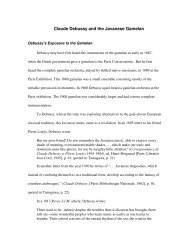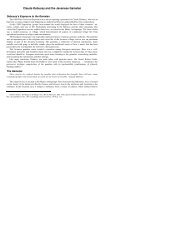Music Preference 1 - Brent Hugh's personal and business web pages
Music Preference 1 - Brent Hugh's personal and business web pages
Music Preference 1 - Brent Hugh's personal and business web pages
Create successful ePaper yourself
Turn your PDF publications into a flip-book with our unique Google optimized e-Paper software.
<strong>Music</strong> <strong>Preference</strong> 27<br />
results in the neural network are similar to those in metallurgy: A fast cooling process in which<br />
inflexibility of opinion sets in quickly results in quick learning but also the inclusion of many<br />
errors <strong>and</strong> inaccuracies. A slow cooling process in which flexibility of opinion is preserved for<br />
much longer results in a longer learning period but also in learning that is much more precise,<br />
accurate, <strong>and</strong> correct.<br />
The application of the annealing analogy to students music preference is clear: Students<br />
whose musical opinions cool very, very slowly from flexible to inflexible will develop broader<br />
musical interests <strong>and</strong>, in the end, more precise, detailed, <strong>and</strong> accurate musical knowledge.<br />
General musical training is one way teachers can help students' musical opinions cool more<br />
slowly: Hargreaves concludes that general musical training promotes "greater overall liking for<br />
all types of music investigated (including classical <strong>and</strong> popular . . . )" (1986, p. 101).<br />
Another simple <strong>and</strong> effective method for exp<strong>and</strong>ing students' musical interests,<br />
unfortunately not often put into practice, is to simply expose students, starting in the earliest<br />
grades, to the widest possible variety of music in different styles, from different countries <strong>and</strong><br />
cultures, from different historical periods, with a variety of different instruments <strong>and</strong> timbres,<br />
with a variety of textures, in a variety of different styles, <strong>and</strong> in a mixture of different tonalities<br />
<strong>and</strong> meters. Students hear a large amount of music through the mass media, but much of the<br />
music promoted by corporate arbiters of musical taste lies within a narrow range in several<br />
important musical parameters. For instance, De Yarman (1972) found that the vast majority of<br />
music found in elementary school music series published by major publishers was major (90<br />
percent or more) <strong>and</strong> in duple meter (80 percent or more). Less than one percent of the songs in<br />
these series was in a tonality other than major or minor or a meter other than duple or triple. This





